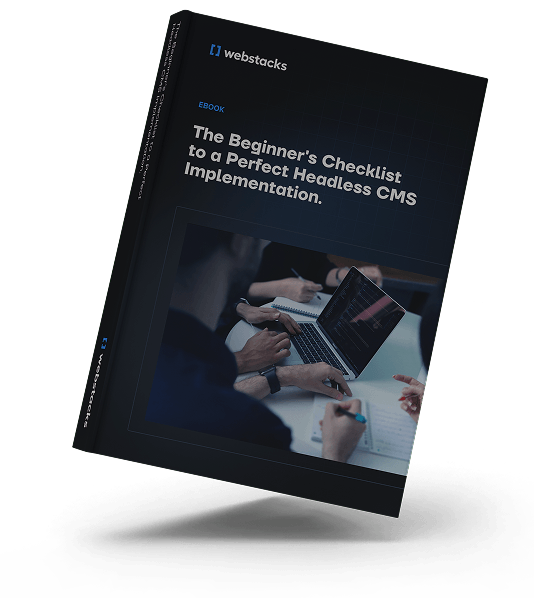Digital content is important for businesses to grow and expand. Content modeling helps by giving a visual representation of how the content should be structured for various parts of a webpage.
That explains why content modeling is a huge selling point for Contentful's headless CMS. In this article, we'll explain how Contentful content modeling works and help you get started on building your content model.
What is Contentful?
Contentful is a content management system that bridges the frontend and backend of a web application and is specifically designed for businesses to facilitate the maintenance of content on websites to increase efficiency and improve customer service.
The backend of a web application is known as the content repository. An example of this would be Contentful. That’s where Contentful’s content modeling fits into the picture.
Why Content Modeling is Important for Headless Users
A headless CMS is for marketers and content editors who input their content in the CMS, leaving the presentation layer of an application for the developers to work on. Building a reusable content model in the headless CMS for content teams will save time and effort.
Content modeling helps map out constraints for design and UI/UX for the website, refining business goals, and technology preferences. A content model is more likely to be effective if it involves people from the organization who understand the business goals and will be involved in the task of coming up with content for the media assets.
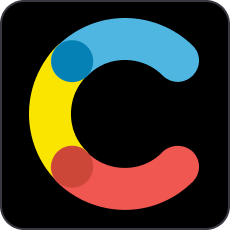
The Basics of Contentful Content Models
Contentful offers solid content models for users to get started.
Compared to some other systems, with Contentful, you will have separate content types for each area of your project by breaking them down into granular entries. The content type is made up of different data types such as text, images, time, and location for all unique use cases.
Content Types in Contentful
Contentful follows a hierarchical technique when it comes to simulating their content modeling structure. Spaces sit at the top of this hierarchy, which contains multiple content types for your project.
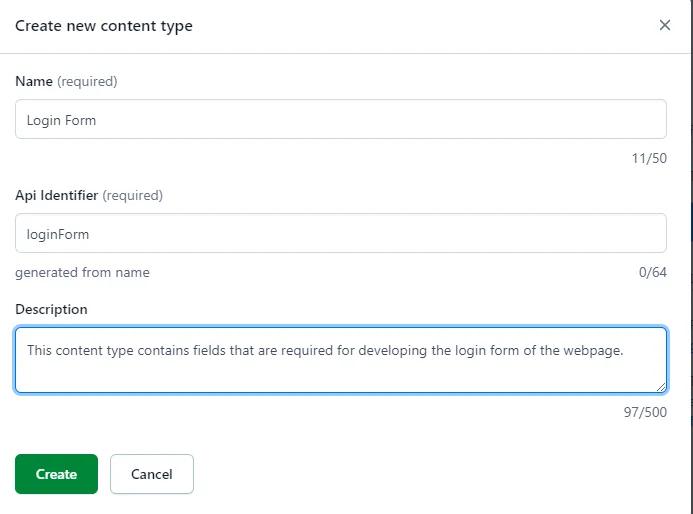
Contentful content type example
Although a Contentful space is exclusive for a single project, it can have multiple content types for various parts of the web application. For example, you can create a content type for the homepage of your website or build a separate content type for the signup button on a landing page.
You can name the content types and work towards completing the content model for the project.
Adding New Fields in Contentful
Once you create the content type, you can add as many fields as you’d like.
For example, a login form on an account page will have fields for email, first name, last name, and password. An author's content type has fields for first name, last name, and biography.
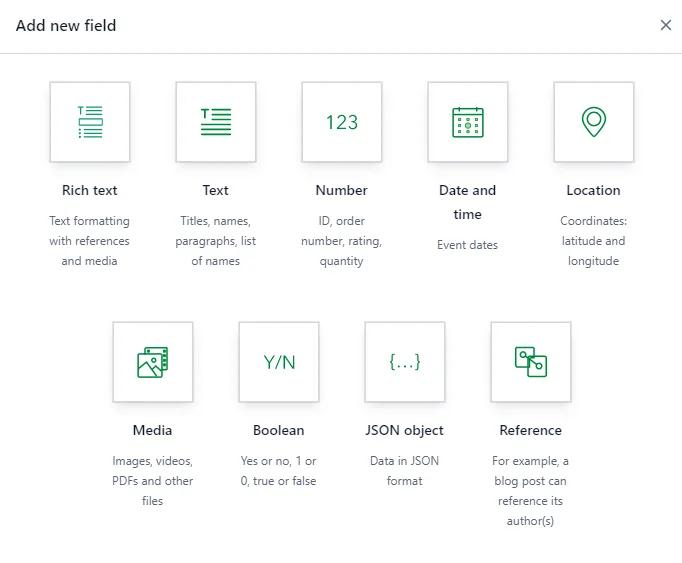
Contentful field examples
In Contentful, you can define up to 50 fields for a particular content type. The fields in the image below correspond to a JSON type.
How to Build Pages Using Content Models
Content modeling gives you an infrastructure to map out web pages by providing web content for several areas of your websites.
Suppose you have content types created for your login or signup page, the home page, blog posts, and personal information page. You can easily forward the content model to the designer and developers of the website to build specific web pages.
In doing so, teams save time and effort since the content model presents the identical structure of the website to different stakeholders.
Contentful Content Model Examples
In this section, we’ll break down three content model examples that stretch across different requirements for you to understand how fields make up content types. These examples will teach you how to use the content modeling facility of Contentful for better resource and content planning.
Blog Post
Content models for blogging are one of the most popular. First, create a free account on Contentful.
Next, create a new space for your project. All the content related to a project is stored in this workspace. Add a content model by adding the content type you want to create.
You will need to identify the information each blog post needs, such as blog title, author, and category. To add a field, select the “Add Field” button in the navigation tab and select the data type suitable for that field.
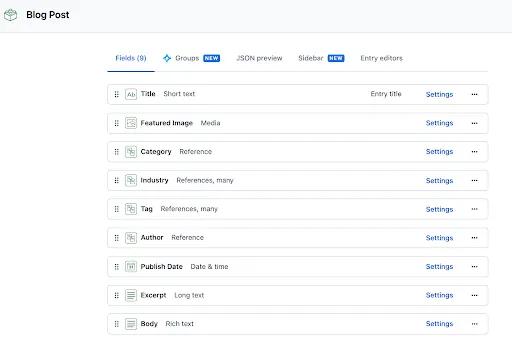
Contentful blog post content model
The title of the blog post can be defined using a short text specifier. Meanwhile, Category, Tag, and Author can be identified using the reference data type. To record the publishing date of a particular blog post, use the date and time data type.
The excerpt and body of the blog post can be specified using rich text that supports up to 5k characters. The character limit is enough to create a working blog post.
Downloadable Assets
For this example, we designated nine fields for specifying the content model for downloadable assets on a website. The first field is the Internal Name that has been specified using the “short text” field used for exact search and enabling sorting to boost SEO progress.
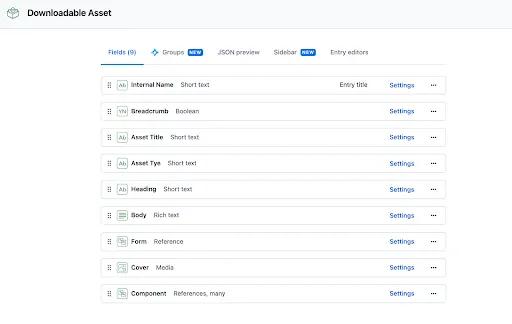
Contentful asset content model
The “short text” field supports a maximum of 255 characters as opposed to the “Long text” field that gives an option to withhold a total of 50k characters. The second field is named “Breadcrumb” which is used to facilitate the secondary navigation of a user on a website.
For this particular example, a boolean data type has been chosen to represent the trail of breadcrumbs so that the developers and designers know how to program this section of the webpage.
A Form field was added as a reference specifier to direct the user to another page to input data into the form. The cover field has been specified using a media data type indicating that an image or a video file can be added.
The last data type of this content model is the “References, many” component to indicate that multiple links will be provided in this section of the website.
Entity: Person
The final Contentful content model example is for an entity: person. This content model can be used to create a webpage aimed to capture or display the personal information of a user.
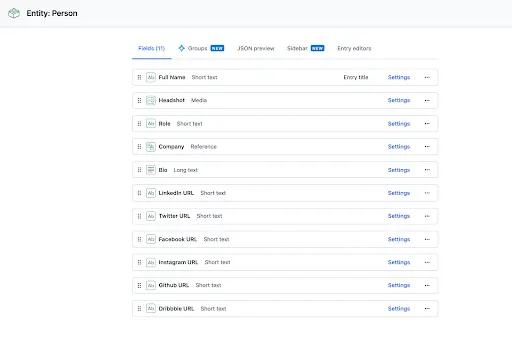
Contentful entity-person content model
The fields that make up this content model include:
- The full name specified by a short text
- An image for the display picture of the person’s profile specified by media data type
- The person’s role at the company
- A biography covering the basic introduction and preferences
- The links to any social media profiles.
The content model for an entity: person is one of the simplest content models you can build in Contentful. It can be used for testimonial sliders, author pages, blog post authors, and more.
How are blog page, asset, and entity models different?
A content model can be customized according to the content type. For the blog example, we named the fields according to the requirements for each blog post.
The content model for downloadable assets showed us how a content model can be created for a section of a website.
The entity: person content model helped us understand that we can build content models on granular objects like an entity.
Parting Thoughts
Contentful's content modeling is one of the best solutions on the market. Not only does Contentful offer an interface for building interactive content models, but it also offers flexibility in supporting different data types for your content types.
Consider Contentful if you're looking to digitize your content structure.
Download our headless CMS implementation checklist to learn how to get started with headless.
